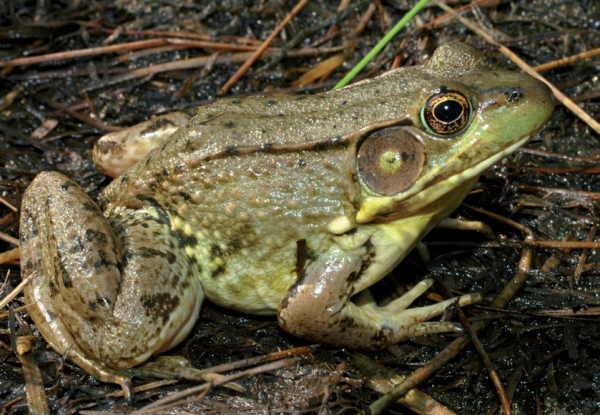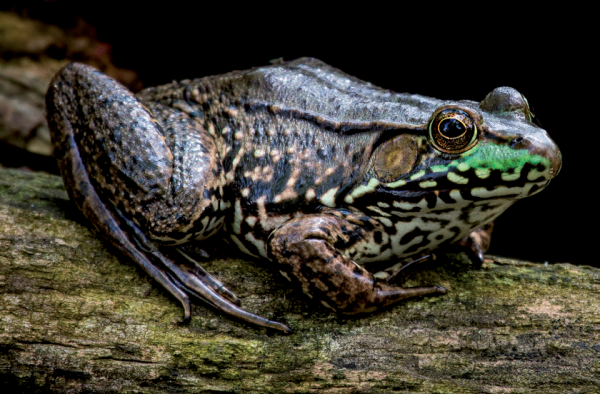By Brian Moyer, VDWR Recreation Program Manager.

Green frog © Paul Sattler
The topic of today’s Frog Friday spotlight, and one of my personal favorite frogs, is the Green Frog. I’m probably not supposed to have a favorite, but this species has a few qualities that I find rather appealing. First, the very distinct “pluck” . . . “pluck” call can be heard as one note or in a series of two, three, or four notes that sound increasingly softer. The call resembles the plucking of a banjo string and is very distinctive and easy to identify. Second, green frogs are considered the most active of Virginia’s frogs and can be seen or heard at almost any body of water, temporary or permanent, that has some forested cover. In fact, there is a green frog that lives in the semi-permanent pool of water under my driveway in the culvert pipe. I’m met almost every evening from May through August with the distinct startle call or “yelp,” a flash of legs, and a splash as the frog jumps from the edge of the ditch near the mailbox into the small pool of water trapped under the driveway.
Green Frogs are large frogs, up to 4-¼ inches in length, brown or greenish in color with two distinct ridges (dorsolateral folds) that extend from just behind the eye to near the groin. The belly is white to gray and often has small, dark, worm-like markings. The throat is a faint yellow to a bright yellow in breeding males. Tadpoles are light green in color and large, ranging in size from 2-½ to almost 4-inches in length.

Green frog © Steven Johnson
Green frogs are considered one of the most active and widespread frogs in Virginia. They can be found throughout Virginia in a variety of both temporary and permanent wetlands that are surrounded by forestland. They are closely associated with water and rarely move far from the water’s edge. They can typically be found in the grassy edges of ponds/lakes or along the margin of swamps and marshes. Breeding begins in May and can extend through August. Depending on the age and size of the female, she can lay anywhere from 1,000–4,000 eggs in a thin sheet on the surface of the water. Tadpoles typically metamorphose in 90 days; depending on when breeding occurs and water temperature, some tadpoles may not metamorphose until the following spring.


